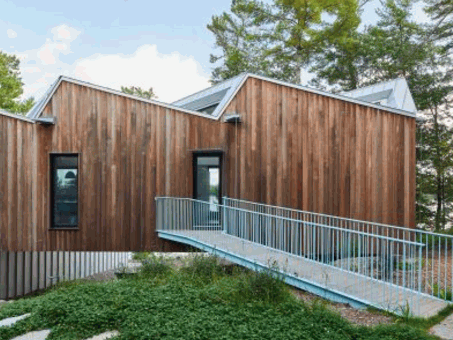Selecting the appropriate roof for a residence is a critical decision that influences both aesthetic appeal and functional performance. Understanding the different types of roof options available can guide this choice. Given the wide array of styles and materials available, it is crucial to evaluate factors such as climate, durability, and cost prior to making a selection. This article examines the various types of roofs—pitched, flat, and sloped—emphasising their distinctive characteristics and advantages. Whether one is considering a traditional gable roof, a modern architecture-inspired flat roof, or even a distinctive mansard roof, gaining a thorough understanding of the available options will ensure that the investment is both practical and visually appealing.
Delve into: Can You Paint Roof Tiles
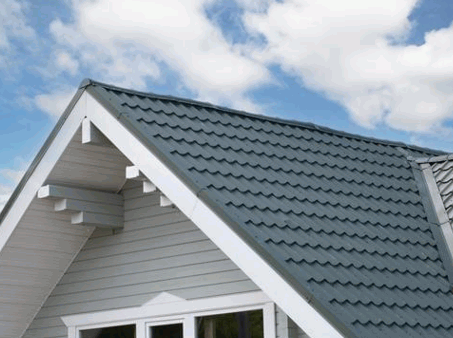
Contents
Choosing a roof constitutes a crucial decision in the homebuilding process, necessitating careful consideration of various factors. These factors include the types of roofs available, local climate and weather conditions, as well as the aesthetic appeal and roofing materials used.
A thorough understanding of various roof designs, such as gable, hip, and modern flat options, can significantly impact not only the visual appeal of a home but also its energy efficiency, durability, and even roof safety.
Furthermore, considerations related to roof maintenance requirements and the roofing solutions provided by roofing contractors and renovation experts are vital components of the overall decision-making process.
Climate and weather conditions are critical factors in determining the most appropriate roof types for residential structures, impacting considerations such as roof pitch, insulation, and drainage design. For example, regions experiencing heavy snowfall may benefit from steeper roof designs, such as gable and hip roofs, while areas subject to significant rainfall may be better suited to flat or mansard roofs to facilitate effective roof drainage.
Understanding the relationship between roof types and their respective climates can significantly enhance energy efficiency and overall durability. In coastal regions where hurricanes are prevalent, roofs with lower pitches and reinforced materials are recommended to withstand strong winds and flying debris, enhancing overall roof efficiency. Conversely, homes situated in arid environments should consider flat roofs constructed from materials that reflect sunlight and minimise heat absorption, thereby improving cooling efficiency.
By selecting an appropriate roof design, homeowners can achieve not only aesthetic appeal but also enhanced longevity, roof insulation, and resilience against severe weather conditions.
The durability and longevity of roofing materials are critical factors to consider when selecting the most appropriate roofing options for a residence, as these aspects directly influence maintenance requirements and long-term costs. High-quality materials, such as metal, slate, or clay tiles, offer robust protection against severe weather conditions, while consistent maintenance can significantly extend the lifespan of various roof types, including flat and gable roofs.
It is important to recognise that not all roofing materials offer the same benefits. For example,
Implementing regular maintenance practices, such as conducting annual inspections, removing debris, and promptly addressing minor issues, can significantly enhance the lifespan of any roofing system. Additionally, monitoring potential problem areas, such as flashing, gutters, and joints, will help ensure that the roofing remains in optimal condition.
The aesthetic appeal of a roof is a critical factor in enhancing the overall appearance of a home, as it influences both architectural features and design harmony with surrounding structures.
When considering roof aesthetics, homeowners must recognize that the selection of materials and styles, as well as attention to architectural features and roof terminology, can significantly accentuate or diminish their property’s value. Popular roof types, such as gable roofs with their classic triangular shape, often exude charm and are well-suited for traditional homes. In contrast, a sleek, flat roof complements modern architecture, promoting minimalism and clean lines, often seen in contemporary building structures. Selecting a roof style that aligns with the home’s architectural features not only elevates its appearance but also enhances its resale value.
Ultimately, the roof serves not only as protection but also as the crowning feature that unifies a home's design elements. Therefore, it is essential to choose a style that resonates with both the architecture and the owner's aesthetic preferences.
Cost is a critical factor to consider when selecting roofing materials, as it encompasses not only the initial expenditure for the materials but also the long-term maintenance costs and potential savings associated with energy efficiency.
When evaluating roofing options, it is imperative to consider the total investment over the lifespan of the roof rather than focusing solely on the upfront cost. Many homeowners may discover that while traditional asphalt shingles may offer a lower initial price, they could result in higher replacement costs and maintenance fees over time. In contrast, materials such as metal or tile roofs may present a higher initial expense but offer superior durability and energy efficiency in the long run.
Ultimately, selecting the appropriate roofing material not only safeguards the home but also contributes to overall savings in maintenance, and energy costs, and offers a return on investment due to increased roof longevity.

Pitched roofs are a widely preferred option in residential roofing, attributed to their efficient design, diverse roof styles, and aesthetic versatility. This category encompasses a variety of roof shapes and styles that accommodate diverse architectural designs.
Common types of pitched roofs include a variety of roof shapes and styles, such as:
Each of these offers distinct advantages such as improved drainage, the potential for additional living space, enhanced roof ventilation, and increased natural light. The range of pitched roof options provides homeowners with roofing solutions that not only ensure protection but also enhance the visual appeal of their residences.
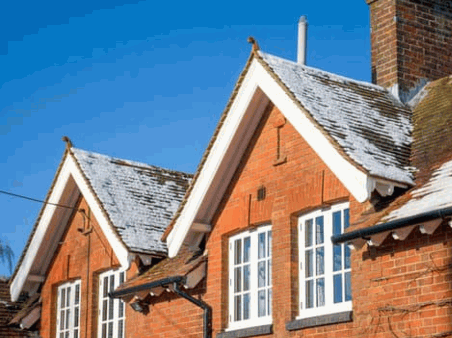
There are several distinct types of pitched roofs, each characterised by unique design features and advantages, including the gable roof, hip roof, mansard roof, and even more uncommon options like the clerestory roof and jerkinhead roof. A comprehensive understanding of these roof types is essential for homeowners to make informed decisions that align with both their building designs and personal preferences.
When evaluating pitched roofs, it is crucial to examine their characteristics and suitability for various environmental contexts. The gable roof, for instance, is widely recognised for its simple triangular shape, which facilitates efficient water drainage and provides ample attic space. This design is particularly advantageous in regions subject to heavy rainfall or snowfall, as it significantly reduces the risk of leaks and structural damage.
Conversely, the hip roof is characterised by slopes on all four sides, offering enhanced stability and wind resistance. This type of roof is particularly effective in coastal areas that experience hurricane conditions. For those who prioritise aesthetic appeal, the mansard roof presents a stylish option with its dual slopes, maximising usable roof space within the upper floors. This design is frequently favoured for its ability to accommodate additional living areas, making it a popular choice in urban environments and unique house designs.
The gable roof is among the most prevalent roof types, distinguished by its triangular shape, which is formed by two sloping sections converging at a ridge. This roof style not only facilitates effective drainage but also enhances the interior living space and natural light within the home, rendering it a preferred option in both traditional and contemporary architecture.
From a structural perspective, the design of a gable roof provides superior wind resistance, as the sloped surfaces can efficiently deflect strong gusts. Additionally, gable roofs require fewer materials compared to more intricate roof designs, potentially leading to reduced construction costs.
Aesthetically, gable roofs are available in a variety of styles, thereby augmenting the visual appeal of any residence. For instance, the classic Cape Cod homes prominently feature the gable roof design, exemplifying the versatility of this style. These roofs are well-suited for various weather conditions; their steep angles effectively facilitate drainage during heavy snowfall or intense rainfall.
The advantages of gable roofs include:
Incorporating a gable roof into a design can significantly enhance both its functionality and aesthetic appeal, making it a wise choice for homeowners seeking to blend beauty with practicality.
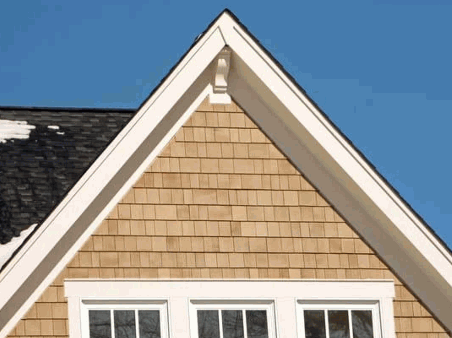
The hip roof, also known as a Hip Valley Roof, is a widely recognised roof type characterised by slopes on all four sides that converge at the apex, resulting in a stable and robust structure. This design facilitates excellent drainage and enhances durability, making hip roofs an efficient choice for homes situated in diverse climates.
Plus these advantages, the design of hip roofs contributes to energy efficiency, proving to be a cost-effective option over time. Homeowners frequently observe that the sloped facets of the roof effectively mitigate heat accumulation, which ultimately leads to reduced cooling costs during the hotter months. For those considering different roof slopes, this choice ensures optimal performance.
The aesthetic versatility of hip roofs accommodates a wide range of architectural styles, from traditional to contemporary. When considering roofing solutions, many individuals are attracted to this design for its visually harmonious appearance and functional benefits.
For example, whether positioned in a serene countryside setting or within an urban skyline, the adaptability of hip roofs ensures seamless integration without compromising performance.
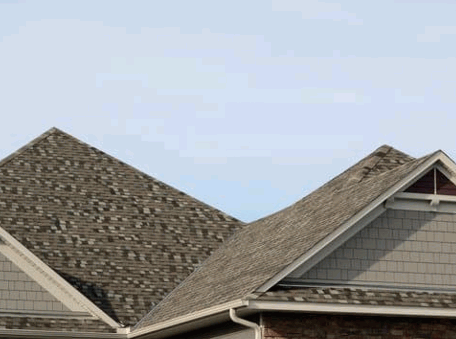
The gambrel roof, frequently associated with barn-style architecture, is characterised by two slopes on each side, creating a distinctive visual effect while maximising usable living space beneath the roof. This architectural style provides increased attic space, making it an attractive option for homeowners aiming to optimise their property’s footprint.
The unique design of the gambrel roof contributes not only to aesthetic appeal but also to practical functionality.
Given these advantages, the gambrel roof can be successfully implemented in various contexts, including quaint cottages, renovated barn homes, or even contemporary residences seeking a distinctive interpretation of traditional design. This roof style encourages creativity in interior layouts, allowing homeowners to enjoy an airy, spacious atmosphere while appreciating the unique rooflines it offers.

The mansard roof is a distinctive architectural design characterised by a dual-pitched slope on all four sides, which facilitates significant additional living space within the attic. This design feature has made it a popular choice among homeowners seeking to create versatile living areas while enhancing the overall elegance of their residences. In fact, the Mansard roof is often seen in Victorian terrace and Edwardian cottage styles in the UK.
This unique roofing style not only optimises space but also offers striking visual appeal, often associated with the French architectural movement. The sloped design allows for increased headroom, rendering attics suitable for various purposes such as additional bedrooms, studies, or recreational rooms.
Notable examples include the classic Haussmannian buildings in Paris, which are distinguished by their elegant mansard roofs. Additionally, modern interpretations can be observed in contemporary residential designs that incorporate sustainable materials while preserving the traditional aesthetic.
The versatility of the mansard roof encourages creativity, allowing architects to merge historical aesthetics with contemporary requirements, resulting in homes that are both practical and visually striking.

Flat roofs represent a contemporary roofing solution that combines a sophisticated aesthetic with practical functionality, frequently employed in modern architectural designs. This roof choice is particularly popular in urban settings where maximising space is crucial.
These roofs are defined by their horizontal surface, which facilitates efficient drainage and provides opportunities for additional applications, such as rooftop gardens or outdoor living spaces.
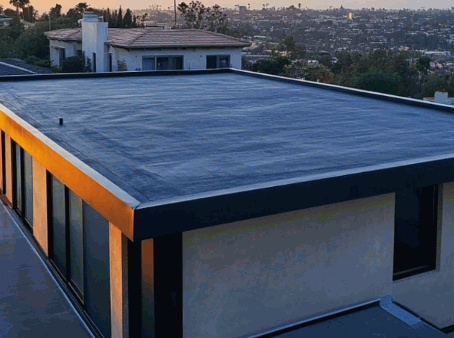
There exists a variety of flat roof types, each with its own distinct characteristics and advantages, including Built-Up Roof (BUR), Modified Bitumen Roof, and Single-Ply Membrane Roof. Familiarity with these roofing options is essential for selecting the appropriate roof type tailored to specific needs, whether for commercial or residential applications.
Plus these primary categories, flat roofs can also be classified based on their materials and installation techniques. It is imperative for homeowners and builders to understand the unique features of each type.
Selecting the most suitable option for a particular building will not only enhance its aesthetic appeal but also improve its long-term performance and energy efficiency.
The Built-Up Roof (BUR) represents a traditional flat roofing system composed of multiple layers of roofing felt, bitumen, and gravel. This construction provides exceptional waterproofing and durability, which is why it is often the preferred choice for commercial buildings, such as those endorsed by Homes & Gardens, due to its longevity and low maintenance requirements.
The multi-layered design of BUR creates a formidable barrier against various weather elements, rendering it highly effective in preventing leaks and water damage. BUR systems are typically constructed from long-lasting materials that are well-suited for extensive flat surfaces and can be installed on a variety of building types, including industrial warehouses, educational institutions, and retail establishments.
Installation Process: The process begins with the preparation of a solid substrate to support the roofing layers, followed by the application of roofing felt and hot bitumen, which effectively bind the layers together.
Benefits: The key advantages of a Built-Up Roof include remarkable fire resistance, energy efficiency, and the potential to create usable rooftop spaces for diverse applications.
Additionally, certain types of BUR exhibit reflective properties that can contribute to reducing energy costs, making it a sustainable option that aligns with contemporary energy-conscious practices.
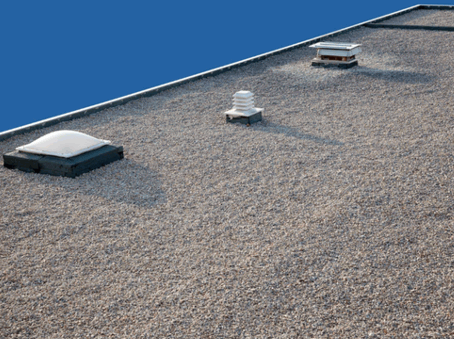
Modified Bitumen Roofs represent a widely accepted solution for flat roofing systems, integrating traditional asphalt with polymer modifiers to enhance flexibility and durability. This type of roofing is typically installed in sheets, providing an effective option for both residential and commercial buildings.
The benefits of Modified Bitumen Roofs extend beyond their straightforward installation process. They are engineered to withstand extreme weather conditions, making them particularly advantageous in regions that experience heavy rainfall or snowfall.
Additionally, their energy-efficient properties contribute to cost savings by lowering heating and cooling expenses, providing further advantages to building owners.
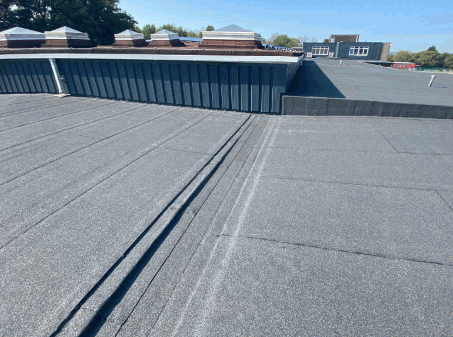
Single-Ply Membrane Roofs represent a sophisticated roofing solution that employs a single layer of waterproof membrane to provide effective protection against environmental elements. These roofs are characterised by their lightweight nature, ease of installation, and notable energy efficiency, contributing to their growing popularity in both residential and commercial sectors.
One of the most significant advantages of these roofing systems is the simplicity of the installation process. Contractors are often able to complete the installation in a fraction of the time required for traditional roofing materials, which results in reduced labour costs. This is a crucial consideration in homebuilding advice provided by experts.
The materials used in single-ply membrane roofing are versatile and can be applied to a variety of roof shapes and sizes, including flat and low-slope designs. This adaptability makes them suitable for:
Maintenance of single-ply membrane roofs is also straightforward; regular inspections and occasional cleaning can ensure optimal performance. These roofs provide superior energy efficiency by reflecting sunlight and minimising heat absorption, leading to lower energy expenses. This feature not only enhances occupant comfort but also supports sustainability initiatives, making Single-Ply Membrane Roofs an intelligent choice for environmentally-conscious builders and homeowners, including those working on Victorian terrace and Edwardian cottage restorations in the UK.
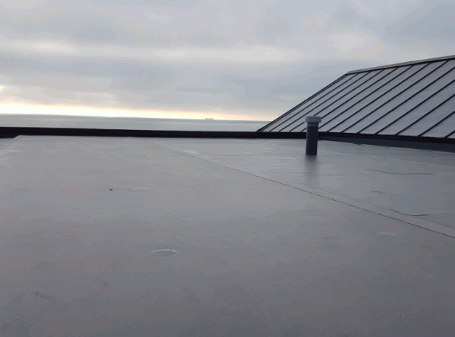
Spray Polyurethane Foam Roofs represent an innovative flat roofing solution characterised by the application of a foam insulation layer that expands upon application, resulting in a seamless and waterproof surface. This type of roofing offers superior insulation and energy savings, making it an excellent choice for energy-efficient building designs.
The application process involves the spraying of two compounds that chemically react upon contact, producing a durable foam that adheres effectively to a variety of substrates.
The energy efficiency of Spray Polyurethane Foam Roofs significantly diminishes heating and cooling costs by creating a thermal barrier that minimises heat transfer.
Choosing this modern roofing solution constitutes an investment in reduced energy expenses and enhanced long-term protection for the building.
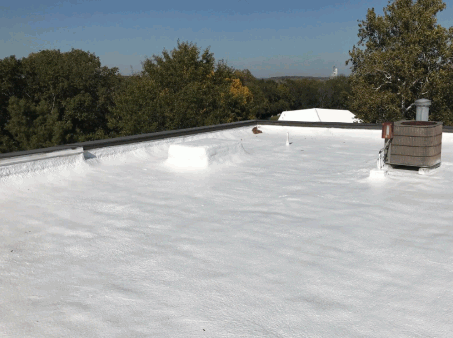
Sloped roofs are designed with an incline, offering several advantages, including effective water drainage, improved insulation, and enhanced aesthetic appeal.
Common types of sloped roofs include shed, butterfly, and A-frame roofs, as well as less common styles like pent roofs and curved roofs, each presenting distinctive design characteristics that can complement a variety of building structures.

There are several types of sloped roofs available, including shed roofs, butterfly roofs, A-frame roofs, and sawtooth roofs, each possessing distinct characteristics and applications. Understanding these roof types enables homeowners to make informed decisions that align with their architectural preferences and functional requirements.
Among the various sloped roof designs, the shed roof is notable for its single planar surface, which provides simplicity and a modern aesthetic. This particular style is especially well-suited for home extensions or outbuildings where practicality and ease of construction are prioritised, often found in UK regions with typical 15-degree roof pitches.
Conversely, the butterfly roof offers a striking visual appeal, characterised by two roof surfaces that tilt downwards towards the center. This unique design not only enhances aesthetics but also facilitates rainwater collection, promoting sustainability.
The A-frame roof, resembling the letter 'A', features a steep slope that is highly effective for snow drainage, making it particularly suitable for regions that experience heavy snowfall. This style is often preferred for holiday homes due to its charming, rustic appearance.
The sawtooth roof consists of a series of ridges and valleys, commonly utilised in industrial buildings, which allows for abundant natural light. Other types include parapet roofs and M-shaped roofs. Each of these roofing options presents a combination of functionality and style, ensuring that homeowners can select a design that meets their specific needs.
The shed roof features a straightforward, single-pitched design that is frequently employed in modern architecture due to its minimalist aesthetic and functional efficiency. This particular roof type facilitates effective rainwater drainage and serves as an ideal option for structures such as garden sheds or small residential units.
Beyond its fundamental form, the shed roof presents numerous advantages that enhance its applicability across various projects. One notable benefit is its cost-effectiveness; construction is generally less expensive owing to reduced material requirements and the simplicity of assembly. The design also allows for the easy installation of solar panels, thereby improving energy efficiency for environmentally conscious homeowners. Furthermore, its versatility enables this style to integrate seamlessly into a variety of architectural themes, ranging from rustic countryside cabins to sleek, contemporary urban residences.
The advantages of the shed roof include:
Consequently, many builders and architects recognise the shed roof for its extensive applications and benefits, rendering it a widely preferred choice within today's building landscape.
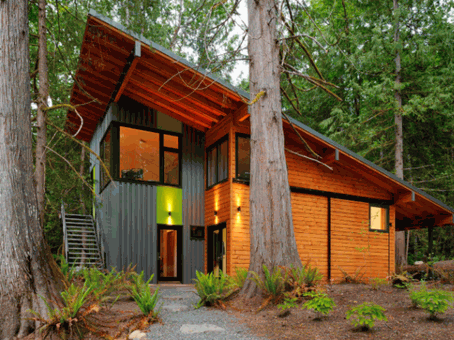
The butterfly roof is an innovative architectural design characterised by two sloping sides that converge at the centre, forming a distinctive inverted V shape. This feature not only enhances the aesthetic appeal of a structure but also facilitates effective water drainage and allows for ample natural light penetration.
Plus its striking visual presence, the butterfly roof provides several practical advantages that contribute to its popularity in contemporary architecture. One of the most significant benefits is its capacity for rainwater collection, as the design directs runoff towards a central point, which can be efficiently harvested for irrigation or other uses. This capability not only promotes sustainability but also enhances energy efficiency by improving insulation.
Moreover, the slope of the roof can create a natural ventilation system, thereby improving air circulation within the interior space. The butterfly roof also presents opportunities for integrating green technologies, such as solar panels, further enhancing its environmentally friendly attributes.
Key advantages include:

The A-frame roof features a distinctive design characterised by steeply sloped sides that converge at a central peak, resulting in a triangular silhouette. This type of roof is frequently observed in cabins and holiday homes, providing excellent capabilities for snow and rain runoff while maximising the available interior space.
What distinguishes the A-frame roof is not only its aesthetic appeal but also its practical advantages across various environments. In areas subject to heavy snowfall, the steep incline facilitates the easy sliding off of snow, thereby minimising the risk of structural damage.
Additionally, these roofs contribute to enhanced natural lighting and ventilation, resulting in a more energy-efficient living space. The triangular design is particularly advantageous in mountainous regions where strong winds are common, offering stability against adverse weather conditions.
This unique architectural feature effectively combines functionality with style, making it a preferred choice for both residential designs and distinctive commercial structures.
Key advantages of the A-frame roof:

The sawtooth roof is an architectural design distinguished by its alternating ridges and valleys, resembling the teeth of a saw. This innovative roofing type facilitates maximum natural light and ventilation within a building, rendering it a popular choice for industrial and commercial structures.
Its distinctive shape not only provides an aesthetically pleasing silhouette but also enhances functionality in several ways. A significant feature of this roofing design is its capacity to accommodate large windows along the vertical slopes, which substantially increases the inflow of daylight. Consequently, this can lead to reduced energy costs as reliance on artificial lighting during daytime hours diminishes. Additionally, the design promotes improved air circulation, crucial for environments such as workshops, warehouses, or even residential spaces like modern home designs where effective temperature control is essential.
Moreover, the unique profile of sawtooth roofs allows for the seamless integration of solar panels, providing an eco-friendly solution that efficiently harnesses renewable energy.
